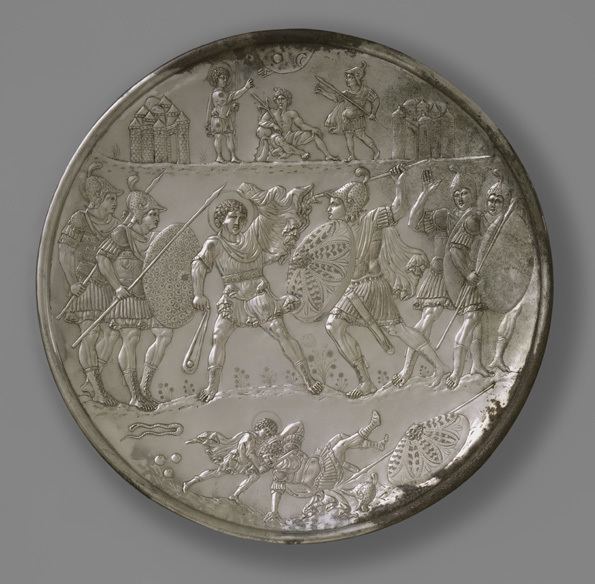 | ||
The David Plates are a set of nine silver plates, in three sizes, stamped between 613 and 630 created in Constantinople, each depicting a scene from the life of the Hebrew king David. These luxury pieces are considered an important part of Byzantine art produced after the rule of Justinian and before the first Byzantine Iconoclasm, during the reign of Heraclius. The plates were discovered in 1902 in Karavás (northern Cyprus) sealed with a jewelry and gold, much of which is also now in the Metropolitan Museum of Art's collection.
Contents
It is suggested that the choice of David symbolizes the emperor Heraclius, and may have been used by a successful family to flatter the successful emperor, or used as a banquet decoration celebrating the emperor's victory. The conquest refers to Heraclius's victory over the Persians in 628, which resulted in the recapture of Jerusalem.
The nine plates were thought to have formed a cross when placed together, with one large plate in the center, four medium-sized plates forming the vertical and horizontal portions of a cross, and four small plates placed on the diagonal axes.
The set were given to the museum by J. Pierpoint Morgan in 1917.
